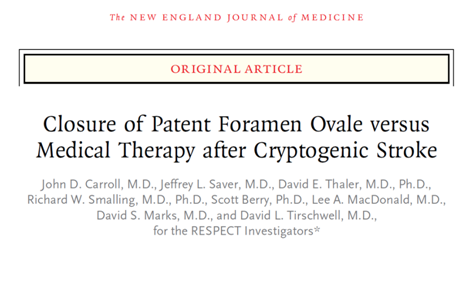The traditional teaching about the role of the cerebellum has typically been that it coordinates movements and “fine tunes” them. It provides balance when walking, and stability of a hand when reaching for a glass of water. When the cerebellum sustains an injury or is malfunctioning, then the result may be gait disturbance, falls, dizziness, or tremor.
The ideas above are what I learned in high school biology, in anatomy, and in physiology. Even throughout my neurology residency training, I largely thought of the cerebellum as a structure that provided balance and fine tuned movement.
It has interested me during my time in clinical practice to witness the fallout from cerebellar stroke, particularly in the younger stroke population, because it is often far beyond balance and movement. Yes, the symptoms mentioned above are often present in some form when the cerebellar stroke occurs, perhaps along with a headache and/or nausea. However, the patients who struggle with recovery for months or years following a cerebellar stroke often complain of symptoms that do not fit with the traditional concepts of what the cerebellum is supposed to be doing.
Some of the complaints I have heard from numerous cerebellar stroke patients are as follows:
– Many struggle with the same cognitive symptoms that patients with strokes injuring the frontal or parietal lobes experience, such as difficulty with focus and multitasking, and because of this, they complain of difficulty with short term memory retention.
– Other cognitive symptoms may exist as well, such as feeling overstimulated, or having difficulty following a conversation in a group of people.
– Difficulty with language fluency (aphasia) has afflicted cerebellar stroke patients in my own experience, and their frustration after being denied disability benefits is palpable.
– Some cerebellar stroke patients express that they are unable to dream any longer, or that when they close their eyes to picture a scene – being at the beach on a breezy day, or running through a field of grass and flowers – they are unable to mentally visualize such a thing.
– Sometimes their significant others claim these patients have demonstrated changes in their moods or personalities, and that their relationships seem different since their strokes.

MR images of Jonathan Keleher’s brain (A and B). The black diamond-shaped void in images A and B reveals Mr. Keleher’s missing cerebellum. The images on the right demonstrate the presence of a cerebellum in the space in a normally developed brain. Photo credit: Massachusetts General Hospital, courtesy of Jeremy Schmahmann for use on NPR.org
Last month, as I was driving home from work one evening, I heard this segment on National Public Radio’s All Things Considered, and I thought – yes! I have to share this on The Stroke Blog with readers! This piece summarizes the complexities of the cerebellum so well for the public, and I hope those of you who read this will take a few minutes to listen to the segment if cerebellar injury is of interest.
The piece features Jonathan Keleher, a 33 year old man who was born without a cerebellum. In the segment, it is explained that Mr. Keleher struggles with emotional complexity, language, and other cognitive tasks beyond imbalance and impaired motor skills. However, because he received intensive physical and speech therapy at a young age while lacking a diagnosis, he was able to demonstrate the wonder of neuronal plasticity – the ability to utilize other parts of the brain to accomplish tasks normally dependent on the cerebellum. He walks independently, and he works in an office environment. He lives independently.
We like to believe that each function is neatly packaged within a certain compartment of the brain. Patients often ask: “If my stroke was here [pointing to a specific part of the brain], then what problems should I expect to have?” While some structures in the brain correlate more or less with certain functions, it really is not that simple, as evidenced by the complexity of the cerebellum, and by what a young man who lacks one has been able to accomplish in its absence. The brain is a large community of cells, an interdependent network that makes us who we are, and which enables us to survive from one second to the next.
Update on November 14, 2017:
When I published the above blog post on cerebellar stroke in 2015, I never dreamed that it would become the most frequently visited page on The Stroke Blog day after day. The comments readers have posted in response to it, and the emails I have received from patients and their loved ones, have underscored the need for more resources about cerebellar stroke. I have heard you, and am working currently to create such a resource beyond a blog post. Stay tuned.
I have also received many emails from patients who have been diagnosed as having vertebral artery dissections believed to have caused their cerebellar strokes. Until recently, there was no largely comprehensive resource for patients struggling through the aftermath of vertebral dissection, but a few months ago, my speech language pathologist colleague, Amanda Anderson, and I published a book for vertebral and carotid artery dissection survivors (click here for more information) and their families in hopes that it would provide badly-needed answers to lingering questions. If you are a vertebral artery dissection survivor, I sincerely hope you find the book useful, and that it at least somewhat helps to validate your “new normal.”
Cerebellar stroke can be more difficult to accurately diagnose because the symptoms frequently don’t scream “Stroke!” the way that weakness on one side of the body or a facial droop may. I have seen cerebellar stroke patients in the acute setting diagnosed with migraine, benign forms of vertigo, intoxication, and substance abuse. When diagnosed early, situations leading to cerebellar stroke can be successfully treated with better outcomes for patients. Awareness of cerebellar stroke in both the community and amongst medical providers is critical for earlier diagnosis and more optimal management.




